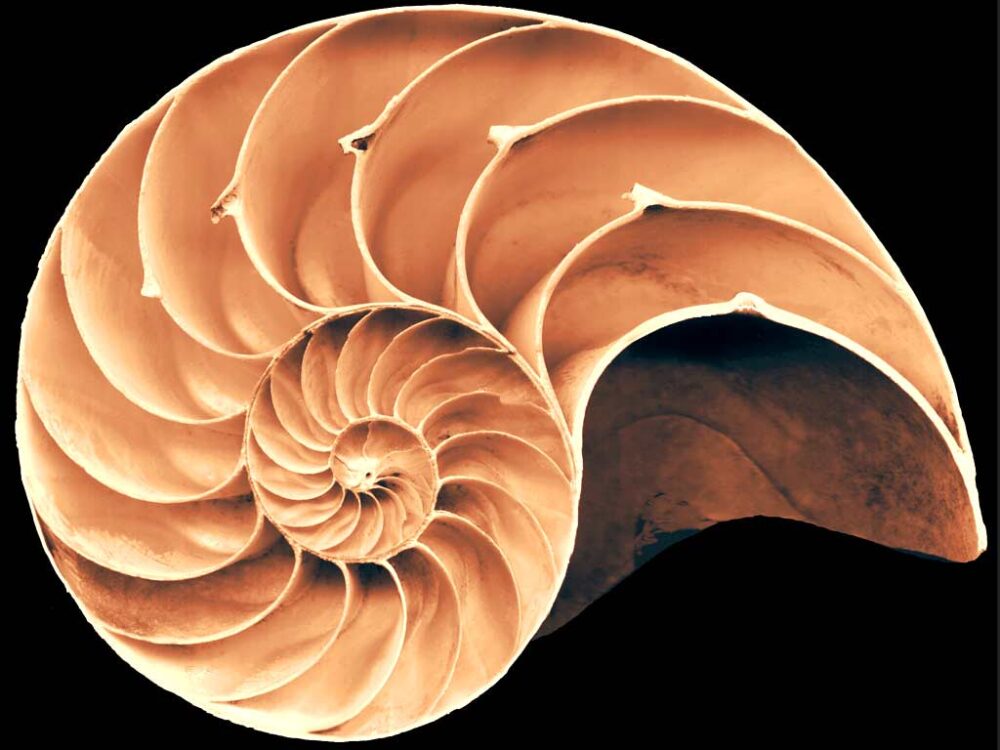In the hit show “Criminal Minds,” Dr. Spencer Reid is known for his high intelligence and ability to see the world in a way that normal people cannot. One of his most iconic moments is in Season 4 Episode 8, where he is able to identify the link between abducted women and their location using the Fibonacci Sequence. He explains that it is “a ratio found all through life.” This is known as the Golden Ratio, best approximated by the Fibonacci Sequence, and is created geometrically through a logarithmic spiral. It is what society sees as beautiful, as some of the most enchanting and breathtaking aspects of nature follow this seemingly simple shape and sequence from flowers to sea shells.
The Fibonacci Sequence is named after Italian mathematician Leonardo Pisano, more commonly known as Fibonacci, who explained this series in his famous book “Liber Abaci.” He poses the question “Quot paria coniculorum in uno anno ex uno pario germinentur?” This roughly translates to “How many pairs of rabbits will spring in one year from one pair?” This assumes some parameters — like walls surrounding the rabbits, preventing them from escaping. Fibonacci then goes on to explain that the rabbit gives birth to one pair of rabbits and again during the second month. “Quia suprascriptum par in primo mense germinat, duplicabis ipsum, erunt paria duo in uno mense.” This means that because the pair of rabbits gives birth in the first month, there will be two pairs in the second month, and so on. The pattern then continues with each new pair also giving birth. Written numerically, it comes to 0, 1, 1, 2, 3, 5, and so on. To graph these numbers, squares are drawn, with sizes corresponding to each of the aforementioned numbers, with 1 being the smallest. In each square, a curve is drawn and connected to the previous, creating a spiral that can be seen all throughout the natural world.
This means that the Fibonacci Sequence is like a code for survival for many flowers.
One of the most common areas in nature where the Fibonacci Sequence can be seen is in flowers and pine cones. In many flowers, the arrangement or number of petals are actually Fibonacci numbers. For example, a lily found in a pond will have three petals, a wild rose will have five petals, and a daisy will have 55 petals. All of these numbers are in the Fibonacci Sequence. According to the research article “The Fibonacci Sequence: Nature’s Little Secret” by Nikoletta Minarova, flowers follow this pattern because it “provides an evolutionary advantage in promoting the plant’s survival.” This means that the Fibonacci Sequence is like a code for survival for many flowers. This is due to the angle between each of the petals — the Fibonacci Sequence allows for flowers to have specific angles that are best for growth.
Flowers are not the only aspects of nature where the sequence can be seen. Many pine cones also follow the spiral created by those numbers. Each fold in the pinecone is a spiral. The first moves from top to bottom, whilst the second moves from bottom to top. Minarova gives an example of how one pine cone has a spiral that reaches the number eight, followed by a spiral that reaches the number 13 in the opposite direction, and so on. This goes to show that the simplest parts of nature, even those that can be found right outside any home, have a mathematical pattern necessary for life.
This goes to show that the simplest parts of nature, even those that can be found right outside any home, have a mathematical pattern necessary for life.
The Fibonacci spirals are also found near the sea, with seashells being some of the most studied. The most famous seashell is the nautilus shell, which has chambers that follow the shape of the logarithmic spiral. The nautilus shell is known for having the “golden proportion,” both because of its color and the fact that it is perfectly proportioned with the golden ratio, which is approximately 1.618. The golden ratio, or phi, comes from dividing one number of Fibonacci’s sequence by the one preceding or succeeding it. Mathematicians and scientists are still unsure as to how the nautilus shell is and has been so perfectly proportioned for millions for years.
From flowers to pine cones to seashells, the Fibonacci Sequence not only makes them visually appealing but also helps in their survival, even since the age of dinosaurs. It is interesting to note that in a universe so filled with disorder, one is always trying to reach a state of entropy with some of the most curious and beautiful things being due to a simple mathematical sequence.
Image source: Flickr
Sources: 1



